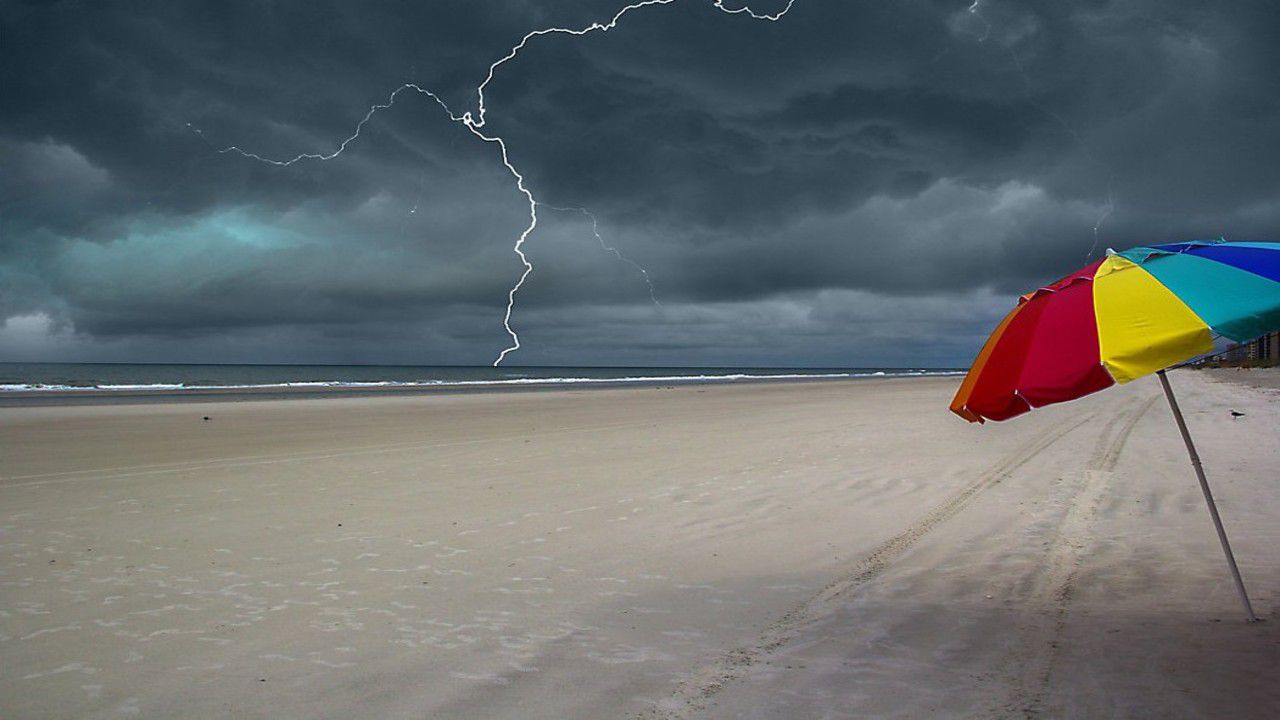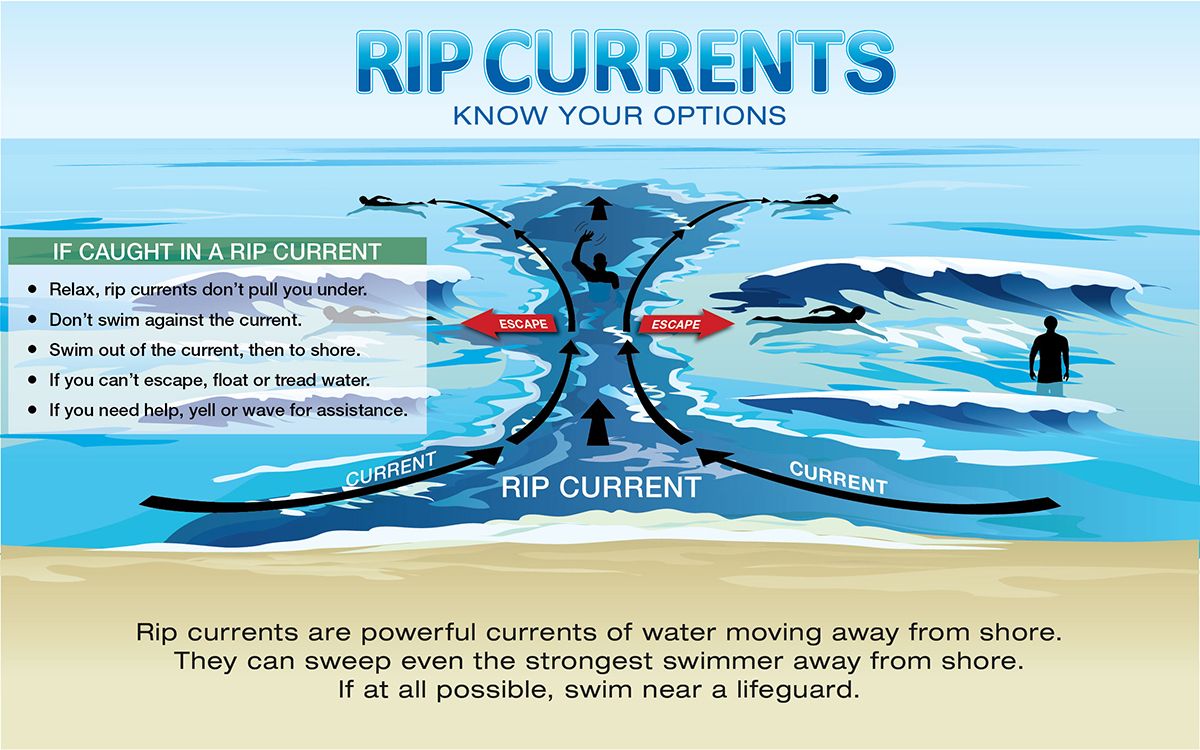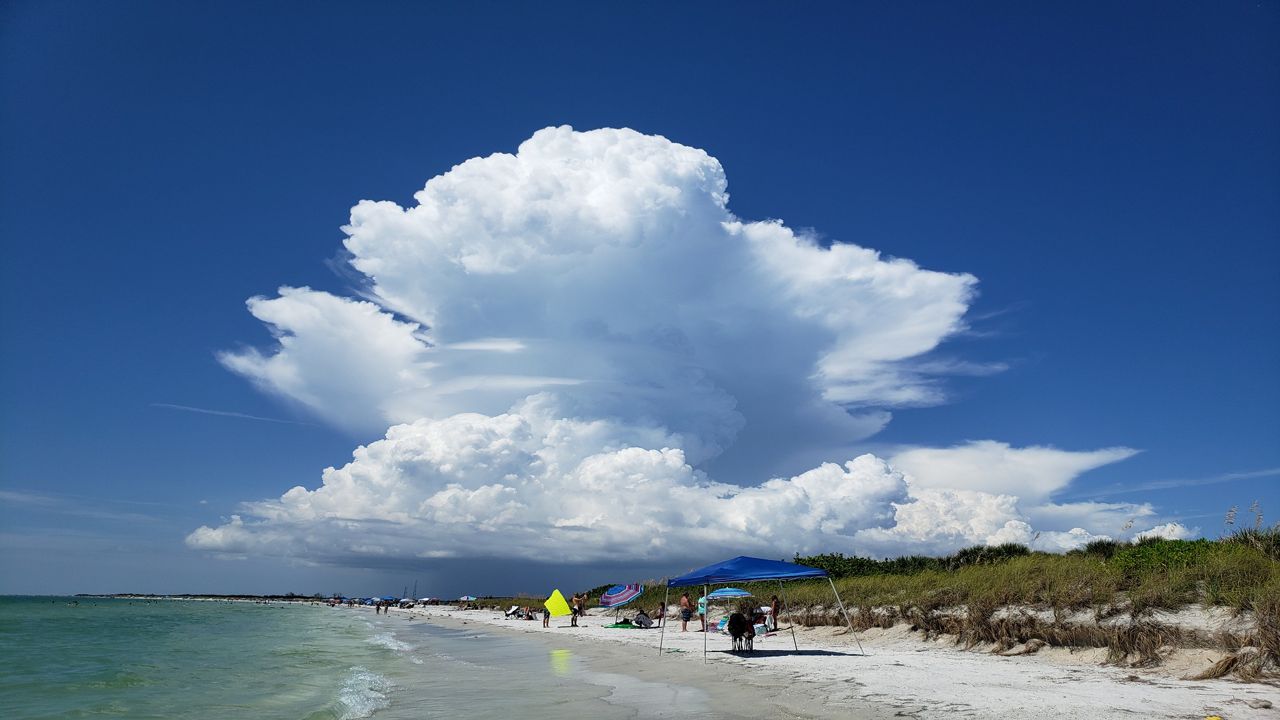Since the kids are out of school for the summer, you might be planning a family trip to the beach. You know the drill: pack the beach towels and a cooler, wear sunscreen, and get ready for a great day.
Summer vacations bring many people to our beaches to enjoy the sunshine. But sometimes, a day at the beach can bring hazards such as thunderstorms and waterspouts. Not only do we have to be aware of these dangers, but we also have to remember that we are far away from a safe place when we are at the beach.
How far away is the car? How far away is a building? We can’t wait until the very last minute to seek shelter when a storm is coming.
The video posted below is one of the most visual examples of why you should not wait until the last minute to leave the beach when thunderstorms approach the area.
On April 10, 2021, a line of thunderstorms approached the entire coast from the west. Skies got dark, so it was obvious to those on Clearwater Beach. That is where this video was taken.
On the leading edge of the storms, a tornadic waterspout formed right near the beach. Notice the swirl on the water's surface. Many times, this is all you will see of a waterspout.
It made landfall on the beach, where it officially became a tornado. People were lucky that it was small and that the heavy beach chairs did not hit anyone! It dissipated when it moved off the beach. Justin Robichaud shot this video from his hotel window.
Summer thunderstorms can produce a lot of lightning in Tampa Bay.

Because lightning can strike more than 10 miles away from the thunderstorm, if you hear thunder, you should pack up your things and get off the beach.
Seek shelter in a building or a hard-topped car. Don't wait until it starts to rain. The second-greatest cause of lightning deaths is due to beach activities, with fishing ranking as number one.
In the water, you need to be aware of rip currents. A rip current is a strong, narrow flow of water that moves away from the shore. The water piles up near the shore from breaking waves and then returns to deeper water.
Rip currents can happen any time of the year, even on sunny days.
Florida leads the country in rip current drownings each year, averaging 18 rip current deaths per year over the last two decades. This is twice the number of the average deaths due to lightning!
Rip currents are dangerous because they are very strong and can pull swimmers away from shore. If swimmers try to swim back to the beach, they can get tired while struggling against the current as they are pulled farther away into deeper waters.

If you are caught in a rip current, don’t fight it. Swim in a direction parallel to the shoreline toward your right or left. When you break free of the current, swim at an angle back toward the beach.
Do your best to avoid being in a situation that puts you at risk. Don't swim alone, and swim near a lifeguard.
Do you know how to spot a rip current? Look at this example. This picture shows the darker water between areas of breaking waves.

Be sure to check the Spectrum News app on your cellphone to check in with Klystron 9 and get alerts about lightning near your location.
Our beaches are some of the best in the country! We can enjoy their beauty and have fun while staying safe.



